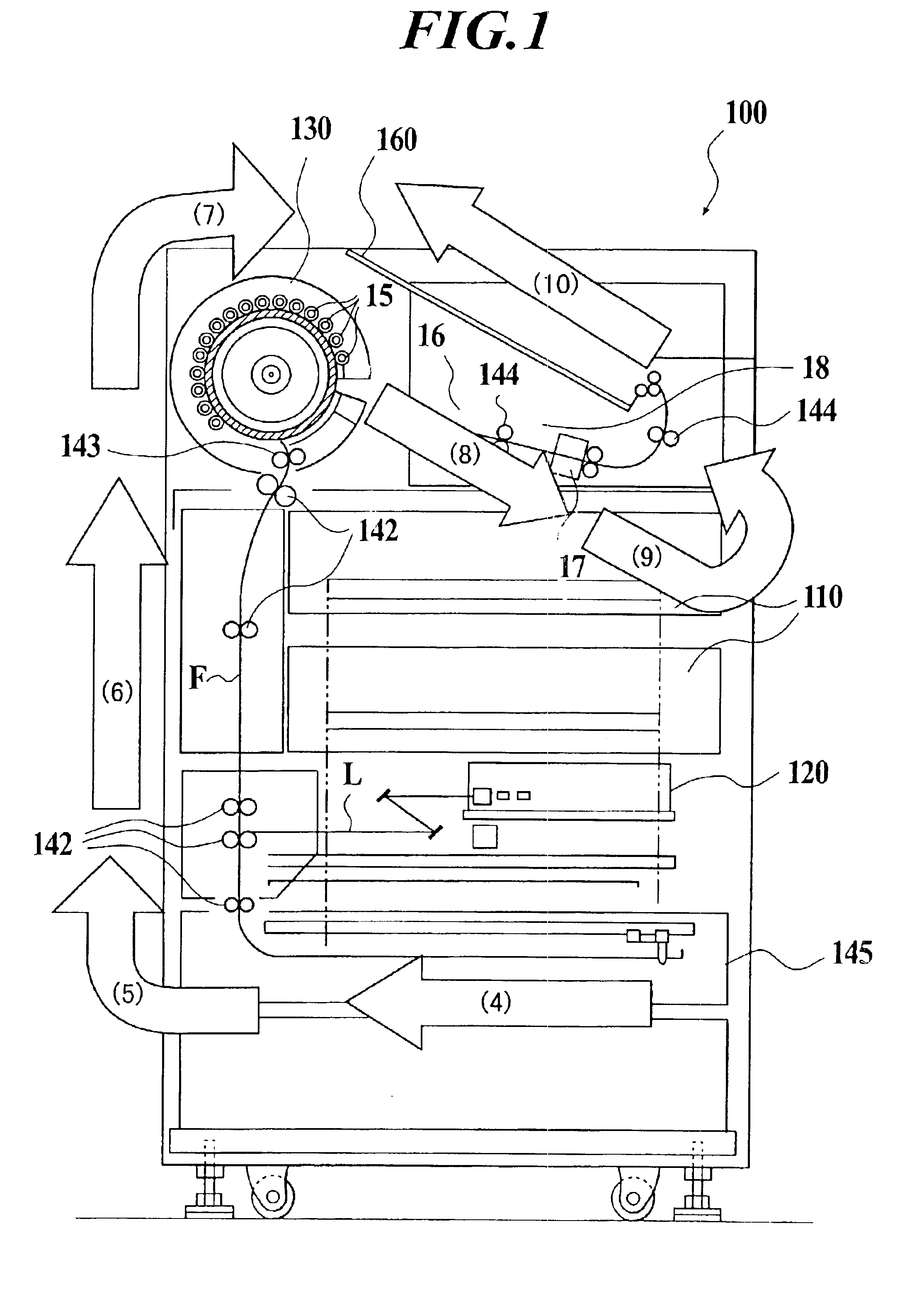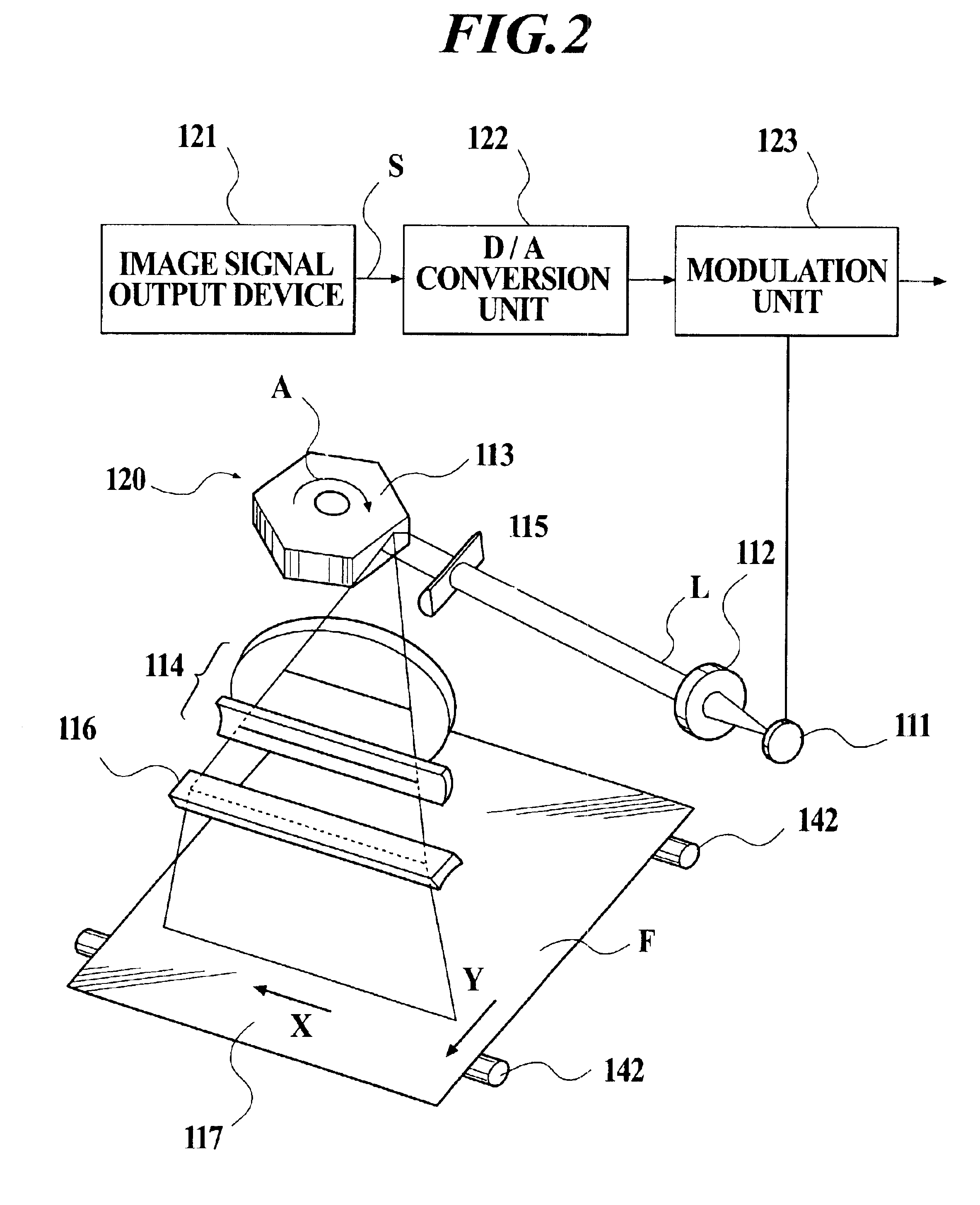Image recording method and apparatus with density control
a density control and image technology, applied in the field of image recording methods and equipment, can solve the problems of high cost, complicated control, and difficulty in obtaining density stably
- Summary
- Abstract
- Description
- Claims
- Application Information
AI Technical Summary
Benefits of technology
Problems solved by technology
Method used
Image
Examples
example
In the above-mentioned embodiment, an apparatus that fulfills all preferred conditions was installed in an environmental test lab. It was heated in a rate of 2.degree. C. / minute from the environmental temperature of 10.degree. C. to 30.degree. C. After the temperature has reached 30.degree. C., it was maintained at a constant temperature for 10 minutes. Then, it was cooled in a rate of 2.degree. C. / minute. After the temperature has reached 10.degree. C., it was maintained at a constant temperature for 10 minutes. While the above-described steps have been repeated, 125 sheets of films for dry image recording SD-P made by Konica Corporation were exposed and thermally developed by this apparatus in an interval of one sheet / minute. As a result, obviously, there was little variation in density in comparison with the variation in density according to the apparatus in the earlier technology.
The present invention is explained by the embodiment as described above. However, the present invent...
PUM
| Property | Measurement | Unit |
|---|---|---|
| wavelength | aaaaa | aaaaa |
| wavelength | aaaaa | aaaaa |
| constant temperature | aaaaa | aaaaa |
Abstract
Description
Claims
Application Information
 Login to View More
Login to View More - R&D
- Intellectual Property
- Life Sciences
- Materials
- Tech Scout
- Unparalleled Data Quality
- Higher Quality Content
- 60% Fewer Hallucinations
Browse by: Latest US Patents, China's latest patents, Technical Efficacy Thesaurus, Application Domain, Technology Topic, Popular Technical Reports.
© 2025 PatSnap. All rights reserved.Legal|Privacy policy|Modern Slavery Act Transparency Statement|Sitemap|About US| Contact US: help@patsnap.com



